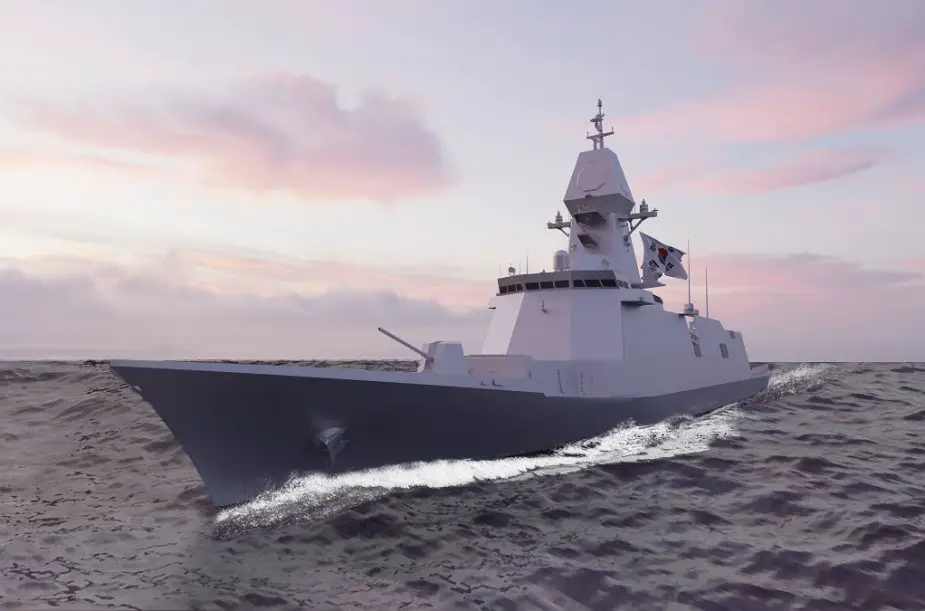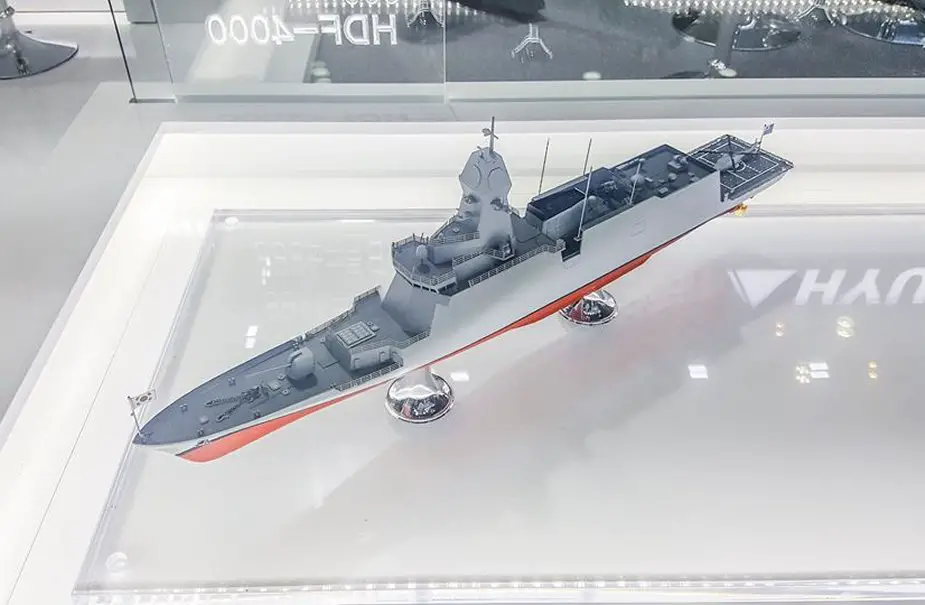Breaking news
ROK Navy’s FFX Batch III Frigate to be equipped with the future Long-Range Naval L-SAM.
According to the Agency for Defense Development, the upcoming FFX Batch-III frigates will be equipped with the future "Long-Range Naval SAM" (Naval L-SAM) and have BMD capability.
Follow Navy Recognition on Google News at this link
 The vessel is the first of six 3,500 ton Ulsan-class Batch-III frigates. (Picture source: HHI picture)
The vessel is the first of six 3,500 ton Ulsan-class Batch-III frigates. (Picture source: HHI picture)
Since FFX Batch-III frigates will enter service before the Naval L-SAM is scheduled to complete development, they will initially be equipped with Haegung (Sea Bow) K-SAAM for self-defense. When the Naval L-SAM becomes operational, they will be integrated FFX Batch-III frigates in service.
This would effectively turn these ships into "mini-AEGIS" frigates and would provide ROKN's Coastal Fleets with fleet air defense & missile defense capabilities found on KDX-3 and KDDX destroyers of the ocean-going Mobile Task Flotillas.
The L-SAM is being developed as part of the Korean Air and Missile Defense project, slated to be ready in 2020. It aimed to intercept missiles at an altitude of 50 to 60 kilometers with the ability to shoot down Pyongyang's ballistic missiles in their terminal phase. Currently, the U.S.-made THAAD system is capable of intercepting incoming ballistic missiles at 40 to 150 kilometers.
 FFX Batch-III frigate model unveiled at MADEX 2019. (Picture source: Twitter)
FFX Batch-III frigate model unveiled at MADEX 2019. (Picture source: Twitter)
About the FFX Batch-III frigates:
The class of 129-metre longships was previously known as the FFX Batch III frigates and will displace 3,500-ton vessels. The frigate is scheduled to be constructed at HHI’s Ulsan shipyard and to be delivered in 2024.
The ship will also adopt a hybrid propulsion system designed to avoid detection by submarines. It can also operate at high speeds, up to 30 knots, using gas turbine in case of emergency, which will enhance its operational capabilities, according to Hyundai Heavy.
The ship will be equipped with a four-sided fixed multi-function phased array radar capable of 360-degree omnidirectional detection, tracking and engagement, which will significantly enhance anti-air defense capability.


























